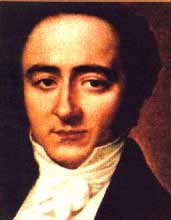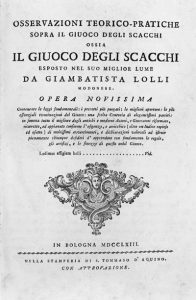Lolli's Mate
Lolli’s Mate Article
Lolli’s Mate Video
Hi Chess for children kids! It’s me, Mr. C. and today’s lesson will be about Lolli’s Mate.
Lolli’s Checkmate was first recorded in a book by Giambapttista Lolli. Born in Nonantola, Modena in 1698 he was part of the Modena School of Chess. The Modena school was a group of 3 masters the recommended quick development and space advantages to win games of chess.
The 3 masters that made up the Modena school was :
- Encoli De Rio ( the first analyzer of the Scotch game, and the author of 2 early chess books) He was considered the founder the founder of the Italian School of chess.
Del Rio’s nickname was ” the devil that never loses”. He composed many chess problems and was a lawyer by profession


3. Domenico Ponziani
Wikipedia write this about Domenico Ponziani:
“Ponziani was born in Modena in 1719. In 1742 he graduated in law at the University of San Carlo and was admitted to the College of Advocates in 1745. He was Professor of Civil Law at the University of Modena from 1742 to 1772 when he retired taking a pension and the title of honorary professor. In 1764 Ponziani took orders as a priest and in 1766 he became a canon in the Modena Cathedral. He became Vicar General in 1784, received the title of Protonotary Apostolic, and was made Vicar Capitular in 1785. Ponziani died in Modena and is buried in the Modena Cathedral.
Ponziani was friend with fellow Modenese chess players and writers Ercole del Rio and Giambattista Lolli, and collectively the trio is known as the Modenese Masters. In 1769 Ponziani published the first edition of Il giuoco incomparabile degli scacchi (The Incomparable Game of Chess). As Ponziani did not include his name in this work (Opera d’Autore Modenese) it was identified to the Anonymous Modenese. The second edition in 1782 was much improved and laid out the principles of the Italian school of chess as exemplified by 17th-century Italian masters such as Gioachino Greco. Although Ponziani identified himself in the second edition, the 1820 translation by English naval officer J. B. Smith using the pen name J. S. Bingham, The Incomparable Game of Chess, attributed the work to del Rio.
Ponziani’s work is the best practical guide produced by the Modenese Masters. Like writings by del Rio and Lolli, Ponziani deals only with the opening and endgame, with no discussion of the middlegame. In the opening, the primary objective is to obtain the maximum amount of mobility for the pieces, aiming in particular for vulnerable points such as the f2 or f7 square. No importance is attached to formation or maintenance of a pawn center—pawns are used to drive back enemy pieces.
In the opening, Ponziani is best known as the eponym of the Ponziani Opening (1.e4 e5 2.Nf3 Nc6 3.c3), although he did not originate it as it was published by Lucena around 1497. His name is properly attached to the Ponziani Countergambit (1.e4 e5 2.Nf3 Nc6 3.c3 f5) in the Ponziani Opening as he published the first analysis in 1782.”
If you would like to know more about the Modenese Masters and the Italian School of Chess you can read batgirls informative article here.


